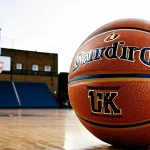Key Challenges Facing Aspiring Athletes in the UK Sports Scene
Aspiring athletes in the UK face multiple sports obstacles that can hinder their progress. One significant challenge is securing consistent funding and support. Many young athletes struggle to access quality coaching and facilities, often due to limited resources in local communities. This lack of infrastructure is a prominent modern UK sports barrier that disproportionately affects talent outside major urban centers.
Additionally, balancing education and training commitments creates time constraints, with the pressure to succeed academically sometimes overshadowing athletic development. Mental health concerns and the high level of competition also pose challenges specific to UK athletes. For example, navigating the national sports system requires understanding complex eligibility criteria and funding pathways unique to the region.
Additional reading : What innovations are enhancing the training of UK athletes?
Compared to universal challenges like injury risks and performance anxiety, UK athlete challenges often include navigating bureaucracy and inconsistent support frameworks. Recent trends show increased efforts to address these issues through targeted funding schemes and grassroots initiatives, but gaps remain. Recognising these unique barriers is vital for anyone aiming to support emerging UK talent effectively.
Financial Barriers and Funding Limitations
Limited sports funding UK remains a critical hurdle for many athletes striving to reach elite levels. Public and private funding often falls short, restricting access to quality training facilities, coaching, and competition opportunities. This financial gap disproportionately affects athletes from lower socioeconomic backgrounds, who may lack the resources to supplement funding shortages.
Also to read : How is mental health awareness changing the UK sports landscape?
Athletic sponsorship can help bridge some of these gaps, but opportunities are scarce and frequently favor already successful or commercially appealing athletes. Without consistent financial support for athletes, many promising talents face early exit from their sports careers, unable to sustain training or travel costs.
Recent funding cuts following the pandemic and Brexit have intensified these challenges. Reduced government budgets and shifts in private investment mean fewer grants and sponsorships are available. This uncertainty undermines athlete development pipelines and weakens overall competitive standards in the UK.
Addressing these financial barriers requires targeted strategies to increase investment and support equitable access. Encouraging diverse sponsorship engagement and reinstating public funding can offer athletes a fairer chance to thrive despite current limitations.
Access to Facilities and Training Resources
Access to high-quality sports facilities in the UK remains uneven, significantly impacting athlete development. Geographic disparities mean that athletes in urban centers often benefit from modern training environments, while those in rural or economically deprived areas face limited access to well-equipped venues. This inequality restricts consistent access to training opportunities across regions, impeding equal progression chances.
School and community sports infrastructure vary widely; many schools struggle with outdated equipment and insufficient space. Without adequate facilities, young athletes cannot fully develop essential skills, leading to a gap in athlete development in the UK. Community centers often lack specialist resources, forcing athletes to seek alternative training venues or forego regular practice.
Inaccessible or substandard resources delay performance improvements and can reduce motivation. The physical environment’s quality directly influences training intensity and recovery options, making modern, accessible facilities crucial. For emerging athletes aiming to compete nationally or internationally, overcoming these structural barriers is vital to their progress and success.
Societal Pressures and Mental Health Concerns
Societal and public expectations exert enormous pressure on athletes, significantly impacting their mental health. In the UK, athletes frequently face scrutiny from media and fans, creating a landscape where the demand for success can overshadow personal well-being. This pressure can lead to heightened anxiety, stress, and other mental health challenges.
Young athletes, in particular, are vulnerable to these effects. Research reveals a rising prevalence of mental health issues among this group, with many struggling silently due to the stigma surrounding mental health in sports. The fear of being perceived as weak or less capable often prevents young athletes from seeking the help they need.
Support systems are evolving but remain inconsistent across clubs and organizations. Improving these frameworks is essential to fostering a culture where athlete well-being is prioritized alongside performance. Effective mental health programs, confidential counseling, and open conversations can reduce stigma and promote healthier environments.
By addressing these challenges head-on, athletes in the UK can better navigate public expectations while safeguarding their psychological resilience and overall mental health.
Institutional Structures and Pathways to Professional Levels
Navigating the athlete development pathways UK involves understanding the structured progression from grassroots to elite sport. Central to this system is talent identification, which aims to spot potential early and direct athletes into appropriate development programs. However, the effectiveness and fairness of these pathways can vary; some athletes benefit from clear chances to advance, while others face bottlenecks within governing body structures.
Sports academies play a pivotal role by offering specialized coaching, facilities, and competition exposure. Scholarships within these academies often provide crucial financial support, enabling promising athletes to commit fully to their training without economic stress. This blend of academic and athletic development helps maintain motivation and holistic growth.
Nevertheless, tension exists between accessibility and exclusivity. Governing bodies strive to balance nurturing broad participation with focusing resources on high-potential individuals. Identifying talent requires balancing subjective assessments with objective criteria to maintain fairness.
Ultimately, understanding the nuances of institutional structures and athlete development pathways UK is key for athletes seeking progression. For more detail on how these pathways function, exploring official resources can provide clarity and guidance tailored to individual needs.
Inclusivity, Diversity, and Access for Underrepresented Groups
Sport in the UK has made strides toward inclusivity, but barriers persist for disabled, female, and BAME athletes in accessing sports. Despite increased awareness, many underrepresented groups still face obstacles, such as limited facilities, lack of tailored programs, and cultural biases. These issues restrict participation and hinder the goal of equal opportunity sports for all.
Recent initiatives, like targeted funding and community outreach, have improved diversity in athletics. Programs focusing on female participation and disability sports have raised visibility and access. However, representation at elite levels and leadership roles remains uneven, highlighting ongoing challenges.
Achieving equal support demands addressing systemic inequalities, including media representation and resource allocation. For instance, disabled athletes often encounter inadequate coaching support or inaccessible venues, while female athletes face fewer sponsorship deals compared to their male counterparts.
Understanding these complexities reveals that inclusivity sports UK initiatives must evolve continually. Only through sustained commitment can sports truly become accessible to everyone, ensuring that diversity enriches the athletic landscape rather than being a mere aspiration.
Competition Levels and Increased Performance Expectations
Competition in UK sports has become notably more intense at both grassroots and elite levels. As more athletes vie for limited spots, performance pressure rises sharply. This intensification affects not only those aiming for professional teams but also youngsters trying to impress early on. Coaches and selectors raise benchmarks for talent selection to identify individuals with exceptional potential and consistency under stress.
With increasing pressure, athletes face tougher challenges to maintain focus and deliver peak performances consistently. This leads to the implementation of advanced support structures, including mental resilience training and performance psychology. Athletes benefit from tailored coping strategies designed to handle anxiety and expectations, essential for retention in competitive environments.
In practical terms, managing performance pressure involves combining physical preparation with psychological support. Resources such as sports psychologists and mindfulness programs are becoming standard tools to help athletes navigate the heightened demands. Understanding these dynamics is crucial for anyone involved in UK sports, from athletes to coaches, enabling them to foster environments where talent can thrive despite the rising levels of competition.

